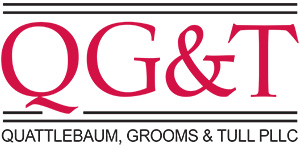Recent Amendment to Chapter 12 Bankruptcy Debt Limits Under the Family Farmer Relief Act of 2019
October 2019
by Mary-Tipton Thalheimer and R. Seth Hampton |
In the late 1980s, Congress enacted Chapter 12 of the United States Bankruptcy Code (the “Bankruptcy Code”) to give hope to “family farmers who are facing the brink of disaster where they would have to be thrown off their farms” by giving them the ability to reorganize.[1] For farmers that wanted to keep their farms, prior to enactment of Chapter 12, their only options were to file for relief under Chapter 11 or Chapter 13. However, for many family farmers, Chapter 11 proved too complicated and expensive, whereas the Chapter 13 debt limits disqualified many family farmers. Thus, the goal of Chapter 12 is to allow the debtor to avoid liquidation and foreclosure by reorganizing and restructuring its finances, while continuing its farming/commercial fishing operations, without having to incur the complexities and costs of Chapter 11.[2]
Under Chapter 12, only a family farmer or family fisherman with regular annual income, as defined by the Bankruptcy Code, may file for Chapter 12 relief. The Bankruptcy Code defines an individual family farmer as: (1) an individual or an individual and spouse; (2) engaged in a farming operation; (3) with aggregate debts that do not exceed $4,411,400; (4) with at least 50.0% of the aggregate, non-contingent, liquidated debts, excluding debt for the principal residence, arise out of the individual’s farming operation; and (5) who received more than 50.0% of income from the tax year preceding the petition year (or each of the second and third years preceding the tax year of the petition date) from the farming operation. [3] The Bankruptcy Code defines a corporation or partnership family farmer as an entity: (1) in which more than 50.0% of its outstanding stock or equity held by one family or one family and the relatives of members of the family (which includes an individual related by marriage or blood within the third degree, as well as individuals in a step or adoptive relationship within the third degree) and such family or relatives conduct the farming operation; (2) in which more than 80.0% of the value of its assets are related to the farming operations; (3) with aggregate debts that do not exceed $4,411,400; (4) with at least 50.0% of the aggregate, non-contingent, liquidated debts, excluding debt for the principal residence, arise out of the entity’s farming operation; and (5) whose stock, if any, is not publicly traded.[4]
In recent years, there has been an increase in Chapter 12 filings nationwide resulting from the continued downturn in the U.S. farm economy.[5] According to a Forbes article written by Marua Webber Sadovi, Chapter 12 filings nationwide have increased in recent years, from 317 in 2014, to 458 in 2017, to 474 in 2018.[6] The combination of tariffs and record rainfall in many agricultural states has increased the likelihood that Chapter 12 filings will continue to increase in the near future. In order to make it possible for more family farmers to avail themselves of the protections of Chapter 12, President Trump signed into law the bipartisan Family Farmer Relief Act of 2019 on August 23, 2019, which increases the debt cap for those seeking relief under Chapter 12 from just over $4.2 million to $10 million. According to the Family Farmer Relief Act co-sponsor Representative Antonio Delgado of New York, the “farm economy is exacerbated by an outdated bankruptcy filing cap that leaves farmers without option to restructure or repay their debt.”[7] The Family Farmer Relief Act is meant to align with today’s land values, the increased in the average size of family farm operations, and the current cost of doing business for today’s farmers.
While the Family Farmer Relief Act increases the debt
limit for family farmers, the remainder of the requirements for qualification
as a Chapter 12 debtor remain the same. Thus,
although it appears that fewer family farmers will be disqualified from filing
under Chapter 12 due to the amount of their debts, other noted issues with
Chapter 12’s eligibility requirements, such as disqualifications based on the
types of debts, may still prove problematic.
[1] See 132 Cong. Rec. H9001 (daily ed. October 2, 1986)
[2] See 11 U.S.C. §§ 1201 et seq.
[3] See 11 U.S.C. § 101(18)
[4] See 11 U.S.C. § 101(18)
[5]See National Association of Farm Broadcasters, Trump Signs Family Farmer Relief Act (Aug. 27, 2019) (available at http://southeastagnet.com/2019/08/27/trump-signs-family-farmer-relief-act/); see also The National Agricultural Law Center, Raising the debt limit: How Chapter 12 bankruptcy saves family farms (Aug. 26, 2019) (available at https://nationalaglawcenter.org/raising-the-debt-limit-how-chapter-12-bankruptcy-saves-family-farms/).
[6] Maura Webber Sadovi, Bitter Harvest: Debt And The Bankrupting Of The American Family Farm (Mar. 27, 2019) (available at https://www.forbes.com/sites/debtwire/2019/03/27/bitter-harvest-debt-and-the-bankrupting-of-the-american-family-farm/#1056ce4b7e7a).
[7] See House Passes Delgado’s Bipartisan Legislation to Ease Chapter 12 Bankruptcy Rules for Family Farmers (July 26, 2019) (available at https://delgado.house.gov/media/press-releases/house-passes-delgado-s-bipartisan-legislation-ease-chapter-12-bankruptcy-rules).
Mary-Tipton Thalheimer is an attorney at Quattlebaum, Grooms & Tull PLLC where she concentrates her practice on debtor and creditor rights and bankruptcy. For more information, please contact Mary-Tipton at 501-379-1742 or mthalheimer@QGTlaw.com.
R. Seth Hampton is an attorney at Quattlebaum, Grooms & Tull PLLC where he focuses his practice primarily on real estate, agriculture, commercial finance, and environmental compliance. For more information, please contact Seth at 501-379-1774 or shampton@QGTlaw.com.
Note: The above article was published in the Fall 2019 issue of The Arkansas Banker. Click the link below to read the actual publication.
